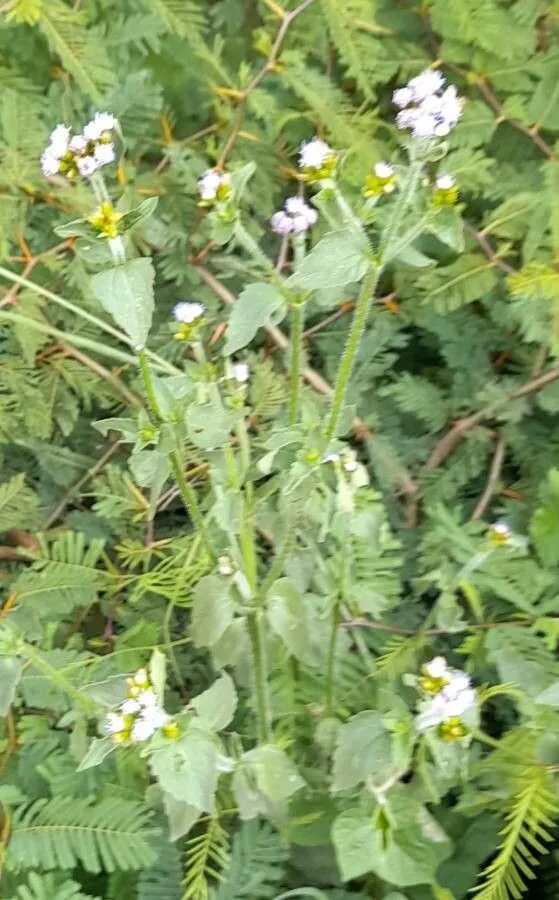
Author: (Hieron. ex Kuntze) R.M.King & H.Rob.
Bibliography: Phytologia 20: 194 (1970)
Year: 1970
Status: accepted
Rank: species
Genus: Praxelis
Vegetable: False
Observations: Peru to Brazil and N. Argentina
Praxelis, known scientifically as Praxelis clematidea, is a flowering plant that belongs to the family Asteraceae. This plant is recognized for its distinctive botanical characteristics and its habitat range extending from Peru to Brazil and northern Argentina. With its origins extensively chronicled in the publication Phytologia in 1970, the plant was further classified and described by botanists (Hieron. ex Kuntze) R.M.King & H.Rob.
In its native regions, Praxelis thrives in a variety of environments, showcasing its adaptability. It contributes to the biodiversity of the ecosystems it inhabits, often occupying spaces in both forested areas and more open environments. The plant’s structure and floral components are consistent with the traits commonly associated with the Asteraceae family, including composite flower heads that display a collection of smaller florets.
As it spreads across South America, Praxelis clematidea plays a vital role in local plant communities. Its interactions with other species—both flora and fauna—highlight its importance in the ecological web. For instance, the flowers of Praxelis serve as a nectar source for various pollinators, thus supporting the reproductive cycles of other plant species within the region.
Understanding Praxelis clematidea is not only essential for botanists but also for conservationists working to preserve the intricate balance of ecosystems in South America. The plant’s widespread distribution from Peru to northern Argentina emphasizes its ecological versatility and the need for continued study to ensure its conservation and the protection of the regions it supports.
Eng: praxelis
En: Praxelis
Taken Jan 1, 2022 by Trap Hers (cc-by-sa)
Taken Apr 4, 2022 by Taís Novaes (cc-by-sa)
Taken Mar 16, 2022 by Djah François Malan (cc-by-sa)
Taken Jun 1, 2021 by Fernando da Luz Schmidt (cc-by-sa)
Taken Jul 21, 2022 by Trap Hers (cc-by-sa)
© copyright of the Board of Trustees of the Royal Botanic Gardens, Kew.
© copyright of the Board of Trustees of the Royal Botanic Gardens, Kew.
Taken Jul 21, 2022 by Trap Hers (cc-by-sa)
Taken Jun 1, 2021 by Fernando da Luz Schmidt (cc-by-sa)
Taken Nov 13, 2022 by Blue Bottle (cc-by-sa)
Taken Oct 10, 2022 by Blue Bottle (cc-by-sa)
Taken Jul 21, 2022 by Trap Hers (cc-by-sa)
Taken Jun 1, 2021 by Fernando da Luz Schmidt (cc-by-sa)
Taken Jul 2, 2022 by pratiwir pratiwir (cc-by-sa)
Taken Jan 1, 2022 by Trap Hers (cc-by-sa)
Taken Oct 3, 2022 by Alain BEIGNET (cc-by-sa)
Taken Jan 1, 2022 by Trap Hers (cc-by-sa)
Growth habit>: Forb/herb, Subshrub
Family: Myrtaceae Author: (F.Muell.) K.D.Hill & L.A.S.Johnson Bibliography: Telopea 6: 402 (1995) Year: 1995 Status:…
Family: Rubiaceae Author: Pierre ex A.Froehner Bibliography: Notizbl. Bot. Gart. Berlin-Dahlem 1: 237 (1897) Year:…
Family: Sapindaceae Author: Koidz. Bibliography: J. Coll. Sci. Imp. Univ. Tokyo 32(1): 38 (1911) Year:…
Family: Asteraceae Author: A.Gray Bibliography: Pacif. Railr. Rep.: 107 (1857) Year: 1857 Status: accepted Rank:…
Family: Fabaceae Author: Medik. Bibliography: Vorles. Churpfälz. Phys.-Ökon. Ges. 2: 398 (1787) Year: 1787 Status:…
Family: Aspleniaceae Author: (Cav.) Alston Bibliography: Bull. Misc. Inform. Kew 1932: 309 (1932) Year: 1932…